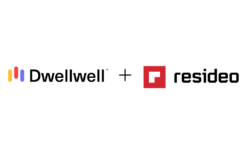The Key to Successful Operations: A Dynamic Digital As-Built for Lifecycle Management
There are system design, management and operations software that are purpose-built to improve efficiency and effectiveness of operations.

Adobe Stock image by Iryna
Systems are not static. Operations managers know this better than anyone.
Especially when it comes to physical security systems, video surveillance cameras need regular inspection, door systems need to be replaced, cabling needs to be updated—the list goes on.
Whether an organization manages their own physical security assets or partners with a system integrator to do the job for them, conducting this work without a dynamic, digital as-built in your toolbelt can render a job that should be a no-brainer frustrating, time-consuming and costly.
The good news is that there are system design, management and operations software packages that are purpose-built to improve efficiency and effectiveness of operations.
The Power of a ‘Single Pane of Glass’ in Systems Design
Most operations teams will tell you that one of their biggest pain points is the handoff from sales to operations to deliver solutions efficiently and on budget. In other words, everything goes smoothly until the time comes for different teams to collaborate.
As most integrators now provide ongoing services to their customers, the interactions between integrators, sales representatives and end users are often frequent.
Not to mention operations teams often tap several key people when overseeing their systems, from procurement, vendors and project managers to technicians, subcontractors and the customers themselves. Ultimately, the goal is to get this operations delivery team to use “one sheet of music,” as they say. Failure to do so will lead to missed expectations and poor project margins.
To make sure all these stakeholders are working with the same information, integrators should consider business operations software that provides a dynamic, digital as-built for each project. This resource will ensure operations teams have access to a secure place to document and manage a living, breathing system of record.
Today, many teams reply on a PDF markup tool to keep track of the devices they’ve deployed within their system. However, when designs change, devices are added or moved, technology is upgraded or maintenance is required, these PDFs age themselves quickly.
As an example, say a customer not only needs to install 50 new cameras but also wants to inspect their current cameras to identify which to replace. For a single, central resource to account for existing technology, new technology, retrofits and redesigns, teams need a tool to help them understand the full picture.

Adobe Stock image courtesy of THAWEERAT
From Email Documents to Dynamic Collaboration Software
Operations has much to gain from the advances in collaboration software. In the past, the standard method for exchanging documentation—from notes to proposals to blueprints—involved hard copies and email.
However, operations teams today are able to access this same information and more from a mobile tablet or a laptop computer using applications designed to keep these exact resources organized in one central location.
The immediate benefit to this kind of platform is accessibility. While a technician may need to access a building’s blueprint in the field, a project manager seeking the same information might spend more than 80% of their time working in an office.
The moment a slight alteration is made by a technician in the field, whatever documentation a project manager has in their hands in the office is rendered obsolete. Suffice to say, the precedent of sharing documents by email has a long history of security concerns, crossed wires and outdated information.
Today’s cloud-based software would allow this same team to work together seamlessly, from the field to the office to anywhere in the world. Many businesses already rely on cloud-based storage to organize themselves.
Operations teams should operate no differently, especially considering there is software purpose-built for their industry. Instead of repurposing platforms designed for construction project management, they can access software more specifically designed for their physical security and IoT technology needs.
Not only does relying on a dynamic digital as-built instead of emailing documents back and forth increase security; it also facilitates collaboration outside of a single organization and between stakeholders across several disciplines.
Today’s operations manager is extending access to their customers bi-directionally using collaborative system design and operations platforms. For example, an integrator may create an initial design for a customer, share it using a link and ask for direct inputs, ultimately inviting that customer to access the digital as-built through a secure portal.
In some cases, the customer can provide a request for a quote to add three video surveillance cameras without a major process through a self-service method. Talk about creating a more collaborative ecosystem and streamlining the process.
Key Takeaways
Now is a good time to look at system design, management and operations platforms that allows teams a better way to document all the aspects of a system in one place. It will behoove any operations team to look under the covers to see how much the software can be used immediately and where there will need to be integration with other software using an API or other customizations.
Most B2B software-as-a-service offers productivity gains “out-of-the box. It’s no different for operations teams.
When evaluating the benefits of integrating operations software into your workflow, we recommend identifying whether you can automate some of the processes and streamline communications and collaboration. With the software in mind, ask questions like:
- Using this software, could we keep projects more on schedule and on budget?
- Could we reduce back-and-forth and missed expectations with a customer?
- Could we get visual confirmations earlier in the process to get estimations and bids correct the first time?
- Could we capture both the initial customer need and pictures of proof of delivery in one place?
- Could we capture important upcoming dates, such as maintenance dates and inspections along with the as-built?
- Can we invite various team members and our customers or partners to the software?
If you see potential for help in these areas, you’ll see where this software can pay rapid dividends and provide more confidence to your team.
Maureen Carlson is the vice president of growth for System Surveyor.
If you enjoyed this article and want to receive more valuable industry content like this, click here to sign up for our FREE digital newsletters!

Security Is Our Business, Too
For professionals who recommend, buy and install all types of electronic security equipment, a free subscription to Commercial Integrator + Security Sales & Integration is like having a consultant on call. You’ll find an ideal balance of technology and business coverage, with installation tips and techniques for products and updates on how to add to your bottom line.
A FREE subscription to the top resource for security and integration industry will prove to be invaluable.







